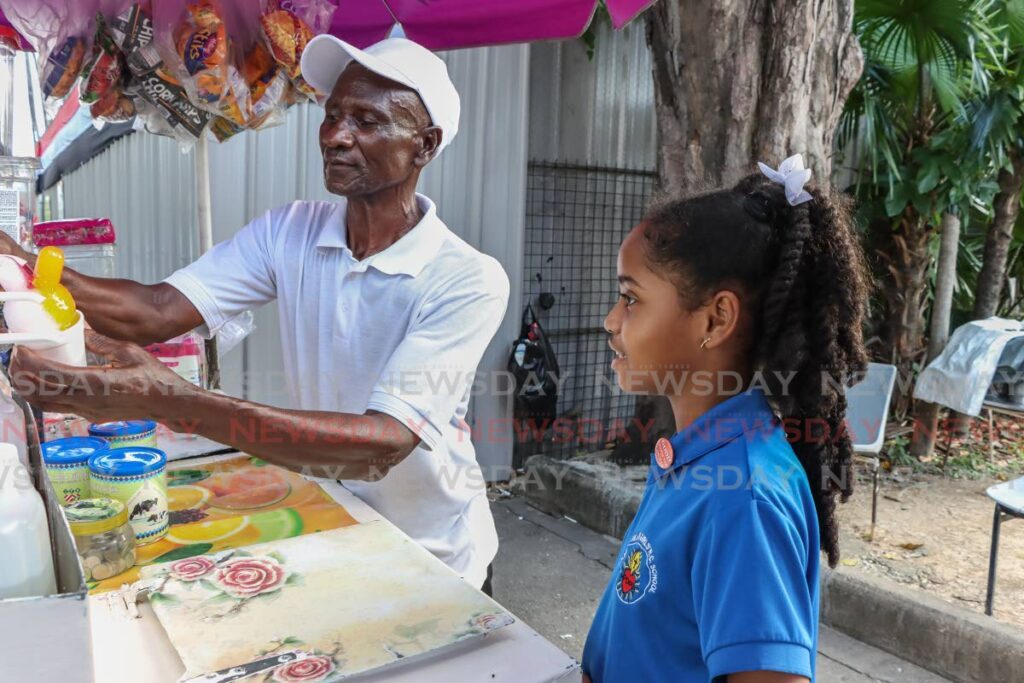HEAT IN D PLACE! – Met Office: Brace for two scorching weeks to come

Hours after Education Minister Dr Nyan Gadsby-Dolly told media heat was not a new problem in TT, the ministry issued a statement advising parents, teachers, and administrators to take precautionary measures against the high temperatures.
The advice was issued as a result of a yellow-level hot-spell warning issued by the TT Meteorological Service.
The Met Office said the extremely hot conditions would be felt during the next two weeks from September 15 to September 29.
It warned that there is an 80 per cent probability that temperatures near 34 degrees Celsius (°C) or greater would be felt across Trinidad with conditions in Tobago near 32.5 °C or greater.
It said “feel-like temperatures” will likely to range between 34 °C and 44 °C with the highest of these temperatures to be felt between 10 am and 4 pm.
Speaking with the media yesterday, Gadsby-Dolly was asked if the ministry had any special plans to deal with the heat.
She said people were “underestimating the operational supervision of teachers and principals” who have been dealing with heat for years.
“This has happened all the time. We are in a tropical country and it’s been hot.”
She added “That’s not new. It’s something we are accustomed managing and we continue that.”
On the topic of installing air-conditioning units in schools, Gadsby-Dolly said, “It’s a continuous process.”
She added “As we build new schools as we refurbish schools these things are taken into consideration.”
The Ministry of Education, in its statement, advised parents, teachers, and administrators to take precautionary measures, if required, to safeguard staff and students.
Those measures include ensuring students remain hydrated with water rather than sweetened or carbonated beverages and utilising available outdoor shaded spaces for class time where possible.
The ministry also suggested that administrators should monitor students’ exposure to direct sunlight and be on the look-out for any signs of heat-related illness displayed by students and staff.
Head of the Primary School Principals Association Carlene Hayes told Newsday the issue would be raised with the organisation’s membership and it would decide what measures might be best.
The heat is set to affect farmers too, as Cunupia-based farmer Isaac Abraham said they were now facing a manpower conundrum.
“We have to irrigate more but we can’t work whole day in this heat so somewhere along the line it will affect productivity and it’s also hard to get workers to work in this sun.”
He said the heat would also affect crops.
“The lifespan of all the crops will be less because heat damages them.”
Abraham said size and quality of the crops would also be affected by the extreme heat.
Employees of the Community-Based Environmental Protection and Enhancement Programme (CEPEP) will also get some relief from the heat.
CEPEP Chairman Joel Edwards told Newsday, “We have the workers’ interest at heart and we will be putting measures in place to ameliorate this hot spell.”
The Ministry of Health (MoH) issued a list of precautionary measures as it noted that very high temperatures can be dangerous.
It advised the public to stay hydrated by eating two to four serving of fruits daily, drinking at least eight to ten glasses of water and avoiding drinks with caffeine and alcohol.
People were also told to protect themselves from the heat by avoiding strenuous exercise between 10 am and 3 pm, staying indoors or in shaded areas when possible, taking frequent breaks or using hats and umbrellas while working outdoors, wearing loose-fitting lightweight and light coloured clothing, and using sunscreen.
The ministry said signs of heat stroke or heat exhaustion include a body temperature higher than 39 °C; cold, pale and clammy skin; tiredness or weakness; dizziness and confusion; nausea or vomiting; muscle cramps; headache and fainting.

Comments
"HEAT IN D PLACE! – Met Office: Brace for two scorching weeks to come"